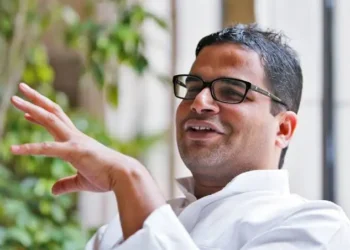With over 3200 students crammed into facilities meant for 200, and resident doctors forced to rest in passageways, Delhi’s central medical institutions are in dire need of rescue. Encroachments have consumed more than 25 acres, while drug peddlers and bootleggers operate freely within hospital premises.
BY PC Bureau
Delhi Lieutenant Governor V.K. Saxena, Chief Minister Rekha Gupta, and Health Minister Dr. Pankaj Singh today chaired an emergency meeting to assess the alarming state of Delhi’s largest government medical complex—comprising Maulana Azad Medical College (MAMC), Lok Nayak Hospital, GB Pant Hospital (GIPMER), and the Guru Nanak Eye Centre.
The meeting was convened following a formal request from the Dean and Directors of the institutions and was attended by senior officers of relevant departments. The presentation laid bare a grim picture marked by severe overcrowding, collapsing infrastructure, rampant encroachments, and serious security and hygiene concerns.
READ: ‘Khamenei can’t be allowed to exist’: Israel’s blunt warning
Established in 1958, MAMC currently accommodates over 3,200 students despite having hostel capacity for only 200. Overcrowding has reached an extreme, with up to 6–7 students sharing a room meant for two, and resident doctors being forced to rest in corridors and near nursing stations. Inadequate accommodation, the absence of proper infrastructure, and unchecked encroachments have created an unsafe and undignified environment for medical professionals and students.
The land originally allocated for expansion has been taken over by unauthorized constructions, including residential flats, religious structures, shops, and even educational institutions. Four large jhuggi clusters encroach on over 25 acres, while several government quarters are illegally occupied and sublet by long-retired employees. The result has been a rise in criminal activity within the campus—ranging from illegal liquor sales and drug peddling to serious safety threats, particularly for women.
READ: Dimapur Weeps as Lamnunthem Singson Returns Home One Last Time
Compounding these problems, the medical buildings are in a dangerous state of disrepair. Due to lack of sanctioned funds, critical restoration work could not be undertaken even when permissions were briefly granted in 2023–24. The college had to resort to crowd-funding for minor repairs, despite visible risks such as falling concrete and collapsing plaster. The shortage of functional toilets, overflowing sewage, and growing sanitation issues pose a public health hazard.
Access to the hospitals has also been severely compromised. Encroachments and illegal parking have clogged approach roads, hampering ambulance movement and emergency services. The medical complex—intended to be a secure and gated zone—now functions as a public thoroughfare, further aggravating the threat to safety and hygiene.













